How did you get started in the hobby?
I received my first model electric train for my sixth Christmas. It was an American Flyer train. Nothing against Lionel, but I told Santa that I wanted a train with two rails, like the real ones. Like many modelers, I really started building what you might consider model railroads as a teen in HO scale. I continued that as an adult and built a special “train room” upstairs for my model trains.
As I tell everyone, I got old and could not see the HO trains well and had to migrate to large scale trains. A trip to Colorado in the late 1980s helped make my mind up to model Colorado narrow gauge trains. I sold the HO trains and build an indoor 6 1/2 by 9 foot large scale model railroad in the old HO scale train room. I soon realized you can’t do much large scale model railroading in that limited space, so in 1992 I went outdoors and officially became a garden railroader.
What was your first large scale locomotive?
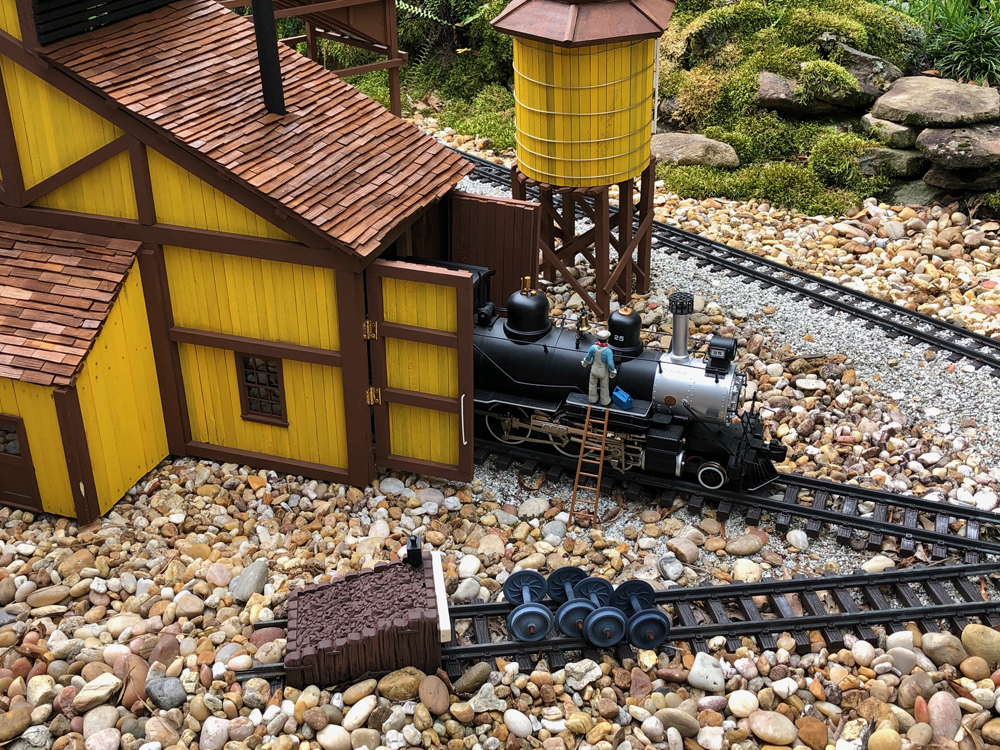
My first large scale locomotive was inspired by the trip to Colorado. It was a Bachmann Big Hauler 4-6-0 lettered for the Rio Grande Southern (road No. 25). I purchased an LGB D&RGW yellow and silver combine and passenger car to run with it. I had a Colorado narrow gauge large scale train!
What’s your favorite part of the hobby?
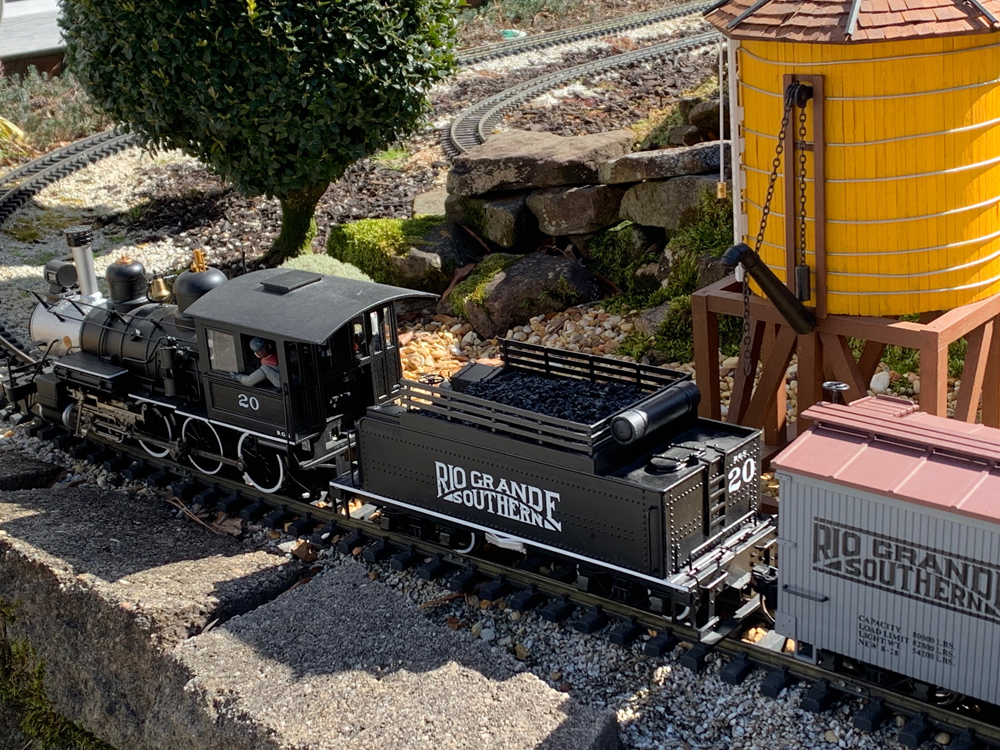
My favorite part of large scale trains is attending National Garden Railroad Conventions. My wife and I like that they are generally in different parts of the country and we make a family vacation based around the convention. Why are the conventions my favorite part of the hobby? That is easy to answer. There are layout tours, possibly my favorite part of the convention, where you can actually see garden railroads in person and get ideas to bring home to your own garden railroad. You see examples of tunnels, bridges, trestles, buildings, water features, diesel trains, steam trains, long trains, short trains, European trains, Colorado narrow gauge trains, old west trains, modern trains, and on and on. There is a vendor or dealer hall where you can often find bargains to take home. In the halls you can see new products introduced. You can meet vendors in the hall. You can meet the manufacturers and get any answers you might have about their products, like “When is the next locomotive coming out?” You can meet other large scale modelers at conventions. There are clinics at the conventions with tons of information on many topics. It is certain to say, attending national garden railroad conventions are my favorite part of the large scale train hobby.
[Editor’s note: As of this writing no convention is scheduled for 2024, but Sacramento will host the 2025 convention, https://www.svgrs.org]
What’s your least favorite part?
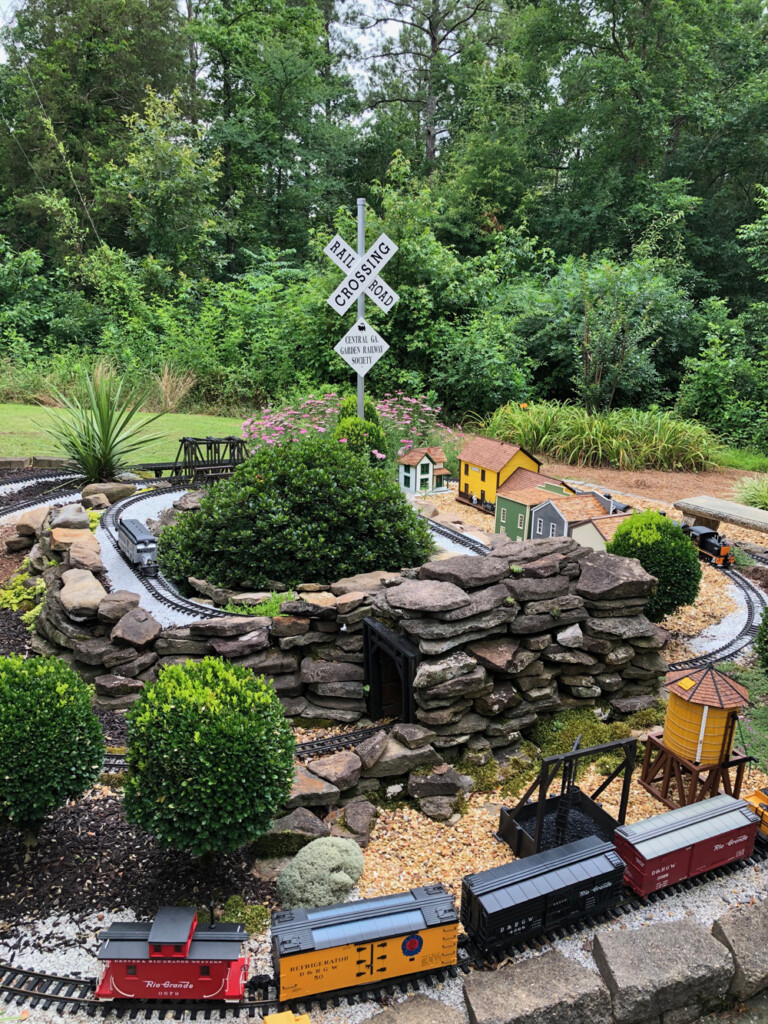
Cleaning track. Polishing the rails so that electricity flows easily from track to train is important for smooth train operation. I use a pole sander with Scotch-Brite pads to keep the rails ready for the electric current. Garden railroading also has Mother Nature to contend with, much like the real railroads that occasionally have to clear debris off the tracks. Leaves, sticks and limbs, animal movement, and even your landscaping plans often need removed or trimmed off the tracks. Rain can create washed out sections of track ballast, mud slides and so forth. Keeping up the right of way is a constant job, but to see the train running smoothly around the garden railroad make all that effort worthwhile.
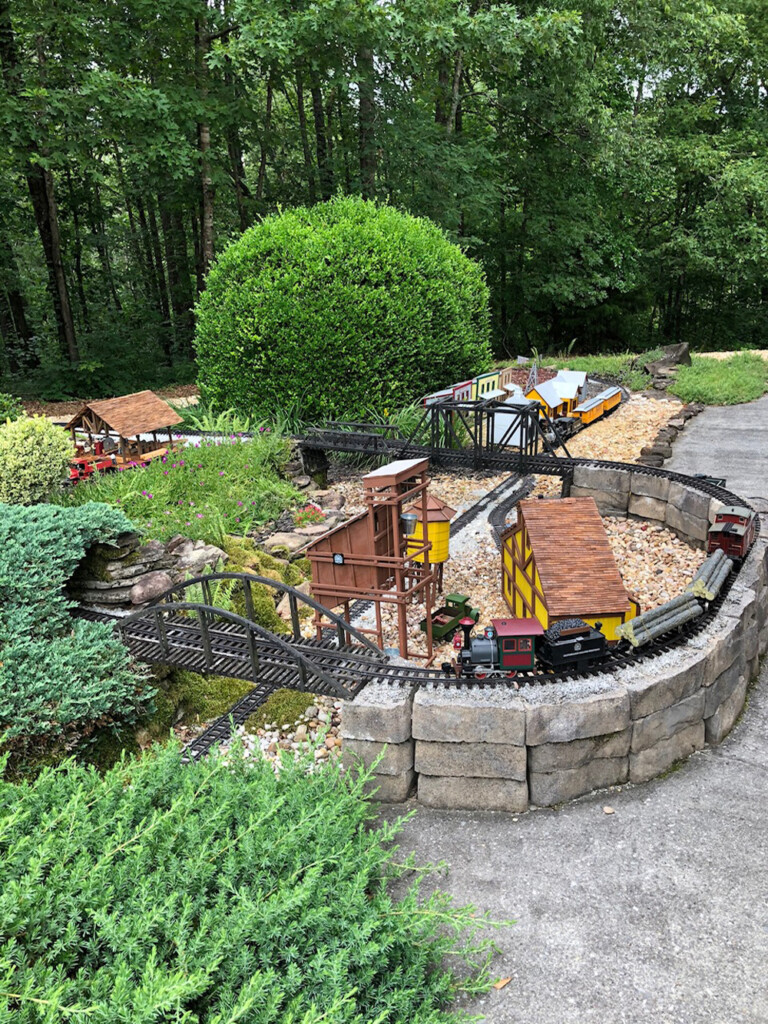
What has been your biggest modeling success?
I stated above how much I enjoy the National Garden Railroad Conventions, so I would guess that my greatest large scale model railroad accomplishment would be serving as the co-chairman for the 2018 National Garden Railroad Convention in Atlanta. I got to meet lots of garden railroaders during that convention. I enjoyed seeing other garden railroaders having a good time. It was a hard job and very time consuming, but in a strange way, it was fun.
What was your biggest modeling mistake?
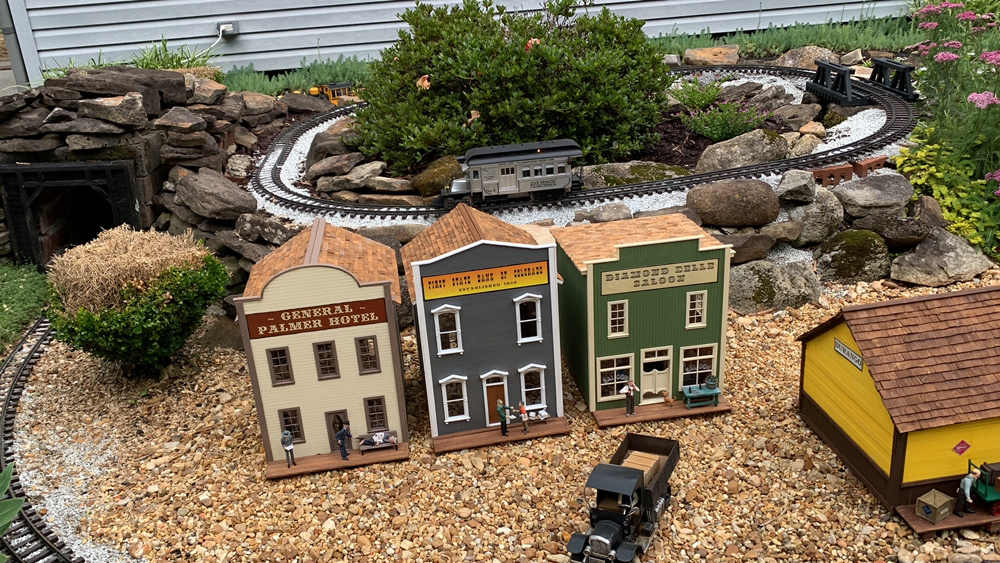
Saying I would NEVER convert from 1:22.5 scale to 1:20.3 scale was my biggest mistake. I always admired the true 3 foot gauge models of the Colorado trains, but they were expensive and too large for my layout. I had invested in the 1:22 scale trains. However, I ran across s deal I could not pass up on some Bachmann Spectrum locomotives and cars. I was instantly hooked on the larger trains. However, they would not fit through my tunnels and negotiate my tighter turns of track. I ended up tearing out the tunnels and relaying wider turns on my track. I do still have some 1:22.5 scale trains and run them, but just not at the same time I am running the 1:20.3 scale trains.
What advice would you give to a new hobbyist?
Start with as wide of track turns as you can fit into your space would be my advice. You may not plan on running larger trains, but you never know. It is easier to lay the wider turns the first time than to replace them later. I also advise people to find a garden railroad club or society in their area and join one. The members are always ready to offer answers to questions and even help with your projects. As a member you also get to visit garden railroads and see what they are really like. Reading hobby blogs or newsletters, visiting websites, reading hobby magazines, checking out Facebook or YouTube are all excellent ways to gain information and develop ideas, but the experience of visiting a garden railroad in person just can’t be beat.
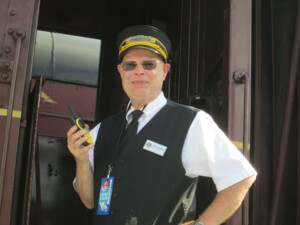
I currently have a garden railroad built in 1992. It has five loops that are not connected and have approximately 300 feet of track. My garden railroad was featured in the June 2018 Garden Railways magazine. I am a current member of the Georgia Garden Railway Society. I am the Eastern Representative of GR News. I volunteer at the Tennessee Valley Railroad in Chattanooga, Tennessee. I serve as the chairman of the local historical society that operate a 1905 L& N Depot with restored 1960 SCL Caboose. I retired as a middle school teacher nine years ago. I currently reside in the northwest corner of Georgia.






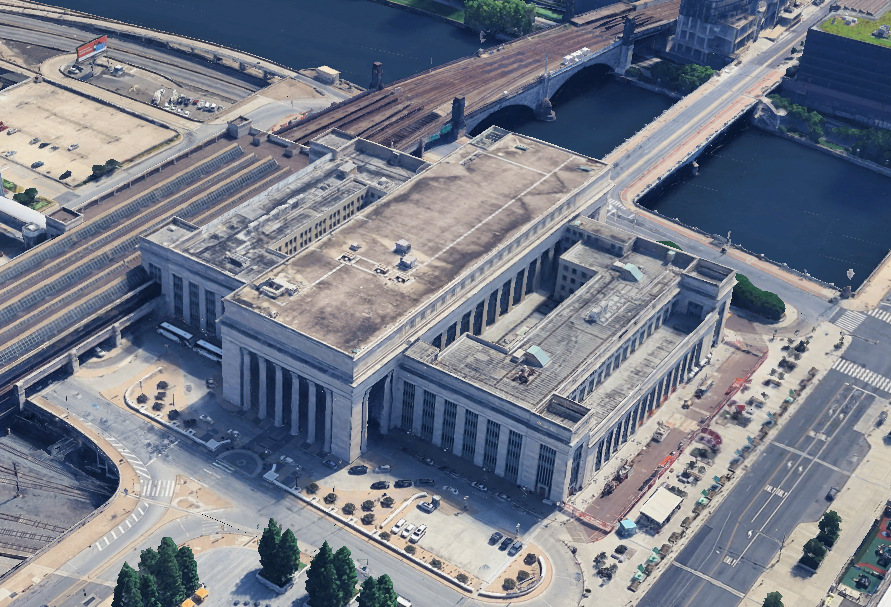
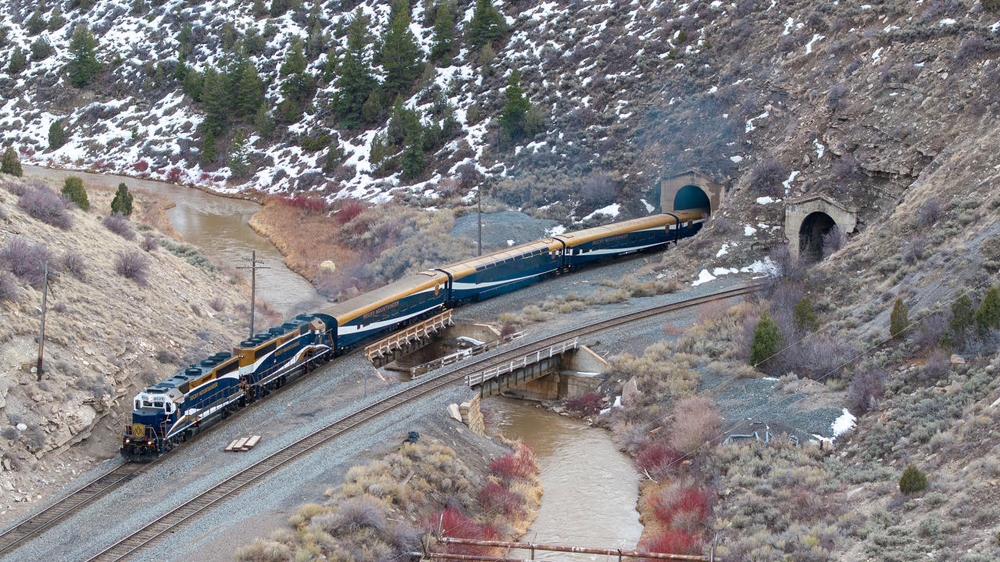
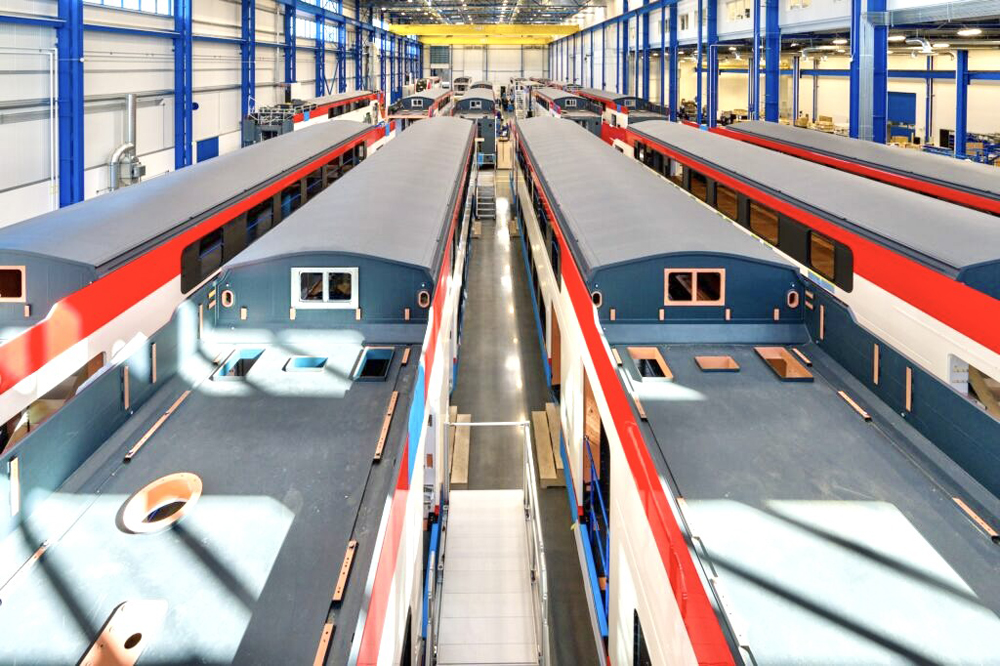
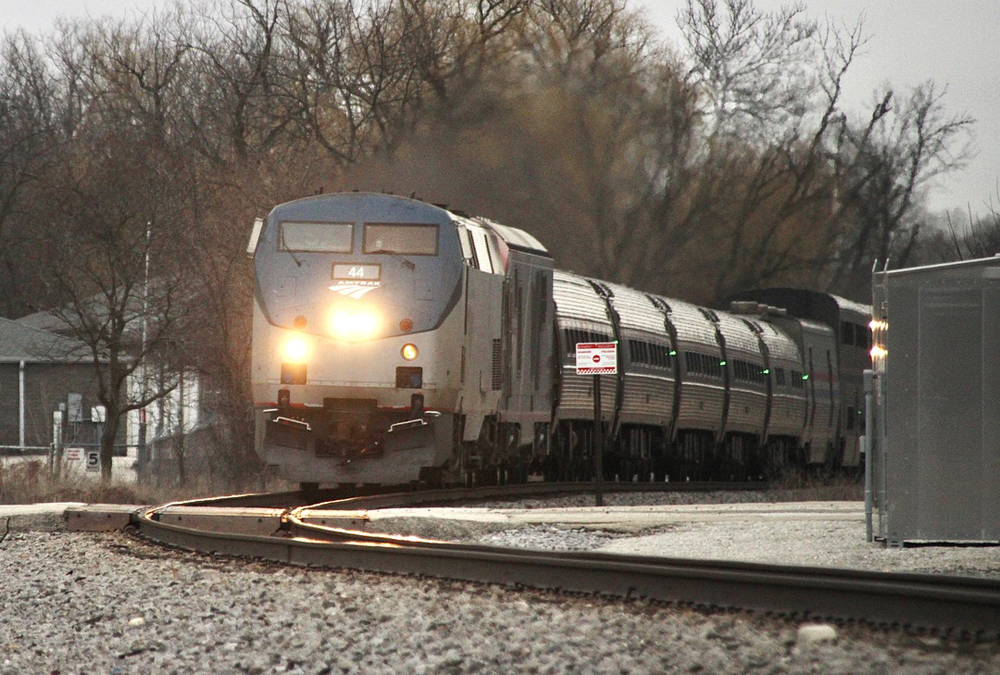




Very nice layout and great advice.